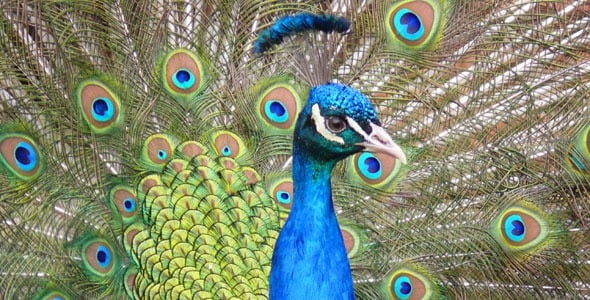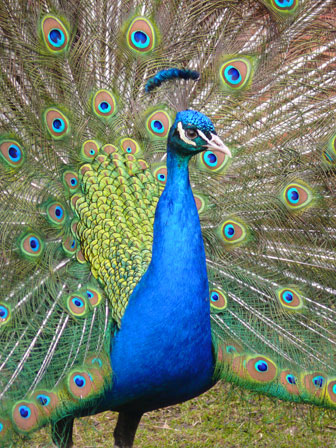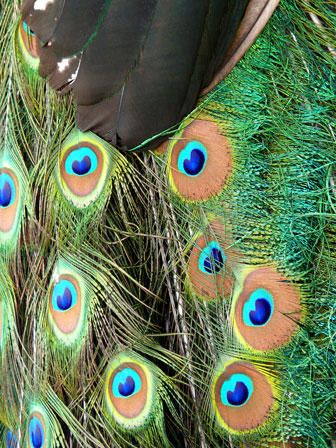A Peacock’s Tale

At the zoo we are lucky to have several free-roaming Indian blue peafowl, more commonly known as peacocks and peahens.
The males (peacocks), with their striking tails, are not only beautiful, but also illustrate a fascinating result of thousands of years of evolution known to scientists as “Fisherian runaway selection”. This peculiar form of evolution is named after the Victorian biologist Ronald Fisher, and is used to describe a feature of an animal (in this case, the male peacock’s tail) that has evolved to increase the chance of finding a partner, but is actually a huge burden on the animal.
The peacock’s tail is a beautiful and complicated decoration that takes a lot of energy to grow. The male with the most impressive tail feathers is most likely to court and mate with a female. His chicks are also most likely to be successful in breeding, as they will have inherited their father’s genes for having a large and impressive tail. However, the large tail also hinders flight and quick movement, meaning that peacocks in the wild may struggle to escape from predators. So, tail size is a compromise between getting a mate, and staying alive. Those that are fit enough to have a big tail and yet still escape from a hungry fox are more likely to get the ladies – real life “survival of the fittest”!




